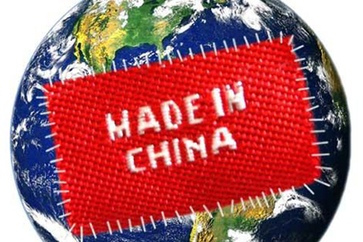Popularity begins at home
- By Zhang Lijuan
 0 Comment(s)
0 Comment(s) Print
Print E-mail China.org.cn, August 23, 2012
E-mail China.org.cn, August 23, 2012

As the label, "made in China," faces continuing scrutiny, some have argued that poor quality is the real concern facing the "made in China" brand. In some developed markets, "made in China" is often interpreted as "low cost" and "low quality".
Interestingly enough, in China, there has been a consensus among people that "made in China" means two different levels of quality. In terms of exports to overseas markets, it means that those markets receive higher quality goods than those which remain in the domestic market. In other words, the Chinese perception is that China exports its highest quality products to the rest of the world, but in the domestic market, Chinese people must make do with far lower quality under the "made in China" label.
So, in this sense, the domestic market might be the future of "made in China." But how?
The first thing China must ensure is that it produces valuable, affordable brands which have a global reputation. Lenovo is an example of this. Lenovo is now one of the most reputable domestic laptop brands and because of the company's M&A with IBM, its brand reputation has soared, both internationally and domestically. If China can produce more products in the mold of Lenovo, it can take advantage of its huge domestic market to give the "made in China" an exciting future.
China must also ensure that a rule-based quality control regime is introduced, so that the "made in China" brand can serve all customers equally, both inside and outside of China. To make this happen, quality and safety administration will have to play a key role in managing, monitoring and protecting public health by assuring the safety and quality of all products. Government agencies should rebuild their reputation and authority in this matter.
In addition, tax rebates should serve as a policy tool, not only to promote exports, but also to build national competitiveness. Some cheap "made in China" products can survive only because of the preference and privilege afforded to them by the government's tax rebate. The result of this system is an increasingly high cost to taxpayers and a deepening ignorance of manufacturers' accountability and social responsibility. The production cycle in the macro-economy involves the government paying a continued high price for promoting trade by providing tax rebates, while businesses continue paying antidumping duties as a result of accusations from trading partners. The only winner in this process is, of course, the foreign consumer. However, as Chinese consumers become more affluent, domestic manufacturers will have to ensure that domestic consumers are satisfied.
In recent years, one interesting phenomenon has emerged: Chinese consumers like to buy "made in China" products in overseas markets. For example, almost all Chinese visitors to the U.S. like to buy luxury brands, even though almost all of those goods are "made in China." The issue is not whether or not Chinese people like to buy "made in China" products; instead, the real issue is why they buy "made in China" products overseas.
For the foreseeable future, the trend of "brand-chasing" will continue to be popular in China. Even after 30 years of economic and trade development, Chinese consumers tend to view foreign brands more favorably than domestic ones. This is unlikely to change in the short term.
However, as China moves beyond labor-intensive and low-value-added processing global trade, Chinese manufacturing industries face a serious challenge from other Southeast Asian nations.
Although the Chinese government is shifting emphasis from economic growth at all costs to growth on a more moderate scale with lower environmental impact, the "made in China" label must endure more scrutiny than before. When Adidas recently closed its manufacturing operation in China, it was symbolic of the fact that the "made in China" label is losing its comparative advantages with regards to labor and other resource processing factors.
There is no doubt that China is capable of making high-quality products. For example, iPads are "made in China" or "assembled in China." The objective today for foreign partners is to ensure that effective quality controls are established and enforced in Chinese factories and that higher environmental standards are also met.
The author is a columnist with China.org.cn. For more information please visit: http://www.ccgp-fushun.com/opinion/zhanglijuan.htm
Opinion articles reflect the views of their authors, not necessarily those of China.org.cn.





